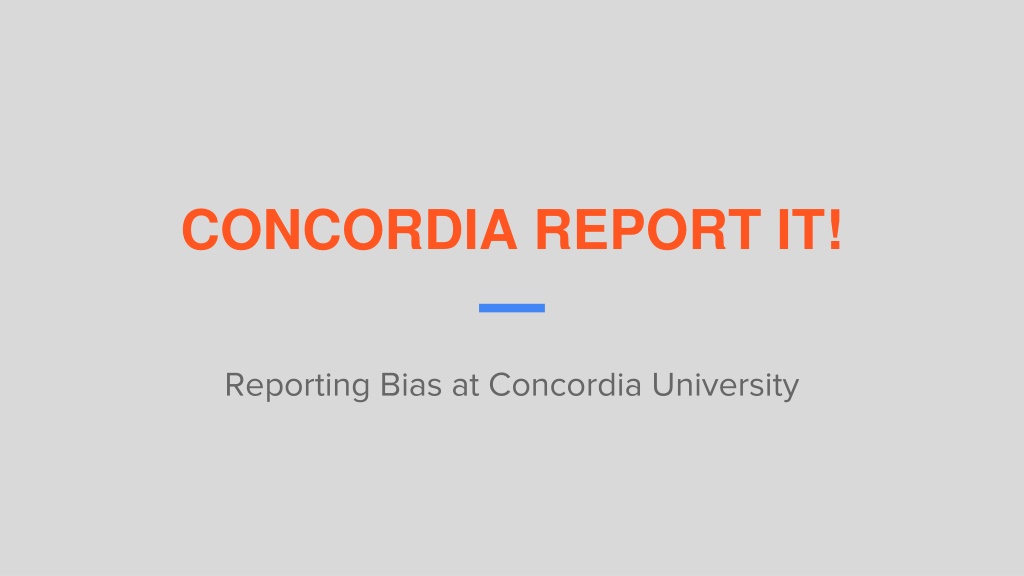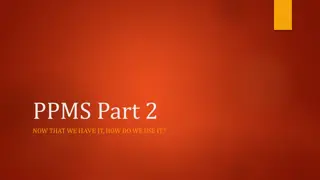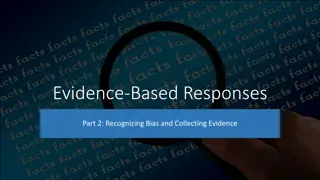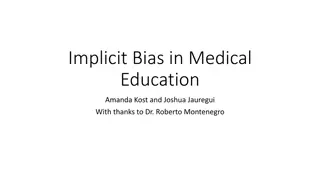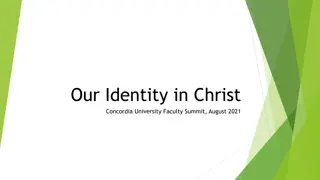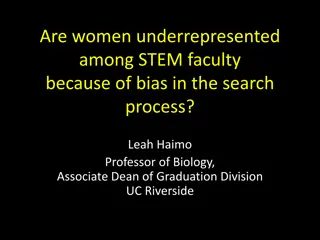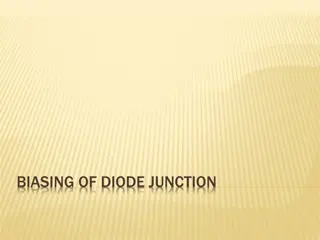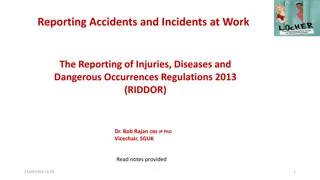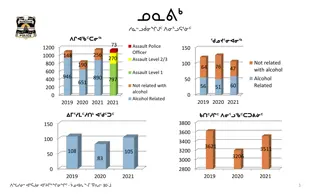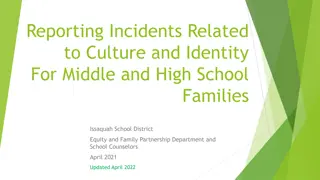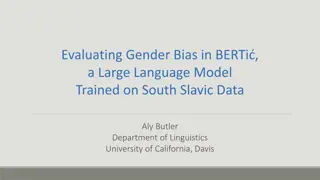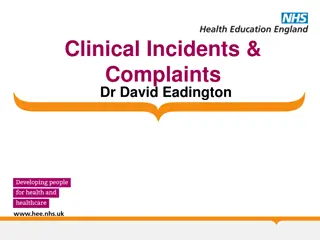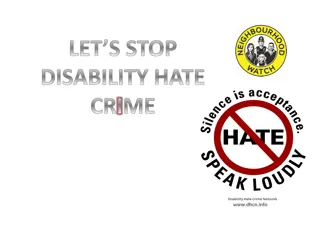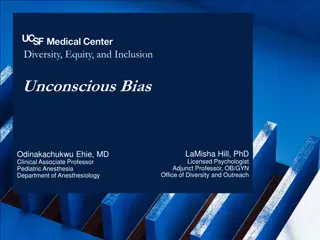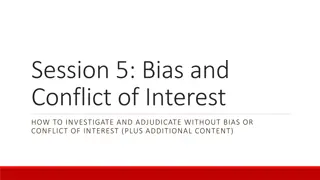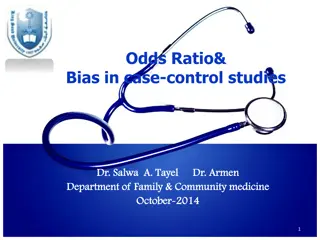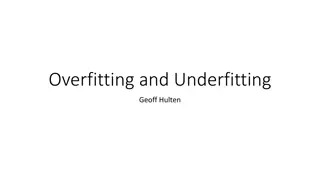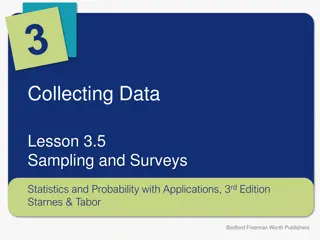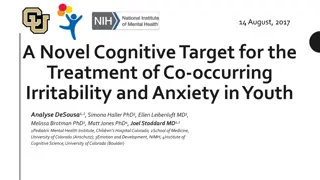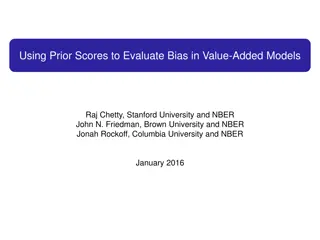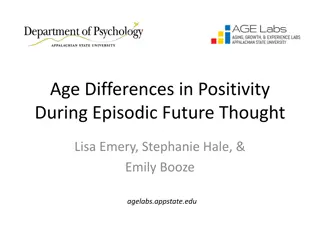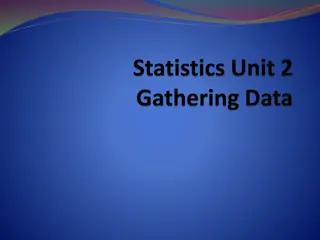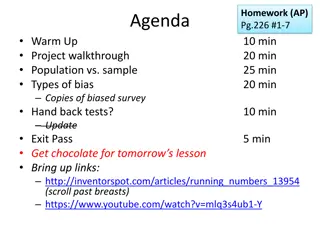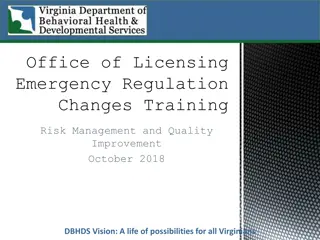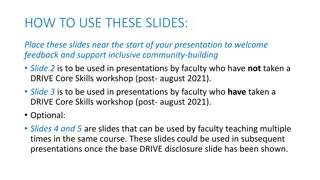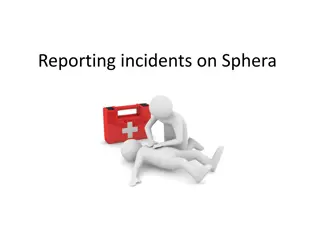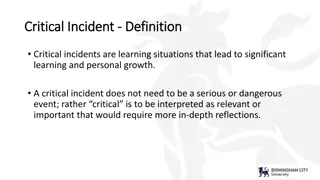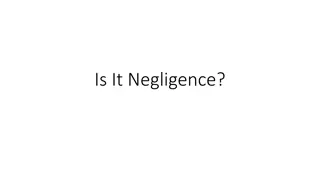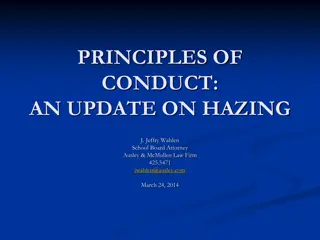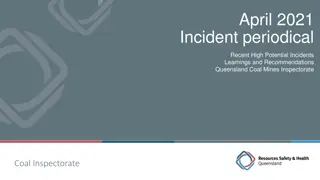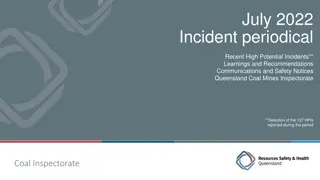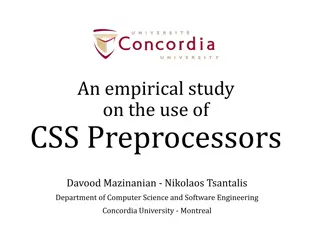Addressing Bias-Related Incidents at Concordia University
The report discusses bias reporting at Concordia University, highlighting the importance of understanding and addressing bias-related incidents. It covers examples of bias, distinction between bias incidents and hate crimes, and strategies for response. Presenters from the Office of Multicultural Engagement provide valuable insights. The document emphasizes the mission and focus of Concordia, history, and practices regarding bias incidents. It also delves into the significance of recognizing and addressing bias within the community for a more inclusive environment.
Download Presentation

Please find below an Image/Link to download the presentation.
The content on the website is provided AS IS for your information and personal use only. It may not be sold, licensed, or shared on other websites without obtaining consent from the author. Download presentation by click this link. If you encounter any issues during the download, it is possible that the publisher has removed the file from their server.
E N D
Presentation Transcript
CONCORDIA REPORT IT! Reporting Bias at Concordia University
Outcomes Affirm our Mission and Focus Learn History and Practices of Bias-Related Incidents Understand Examples of Bias Appreciate the Difference Between Bias-Related Incidents vs. Hate Crimes Develop Strategies for Your Response Understand Concordia Report It Recognize the Process Following a Report Submission
Presenters Shanitra Cheff, Office of Multicultural Engagement-Ann Arbor shanitra.cheff@cuaa.edu Walter Goodwyn, Office of Multicultural Engagement-Mequon walter.goodwyn@cuw.edu Rev. John Rathje, Dean of Students-Ann Arbor john.rathje@cuaa.edu Dr. Steve Gerner, Dean of Students-Mequon steven.gerner@cuw.edu
Our History & Practices CUWAA Code of Student Conduct: #33. Harassment (and Bias-related Incidents): Bias-related incidents are behavior that constitutes an expression of hostility against a person or property of another due to the targeted person s race, religion, sexual orientation,ethnicity, national origin, gender, age, marital status, political affiliation, or disability. CUWAA Title IX website: There are options available to address sexual harassment including behavior such as verbal sexual harassment, sexual assault, stalking, dating or domestic violence, and retaliation for reporting a violation of the sexual misconduct policy. EMPLOYMENT POLICIES AND PRACTICES (CUWAA Employee Handbook): 4.3 Anti-Harassment Policy CU is committed to providing a work environment free of discrimination and harassment.
Examples of Bias While it isn't always easy to recognize, bias can present itself in the classroom, workplace, in resident halls, athletic fields and even hallways. These bias often stems from misunderstanding, hatred, and learned stereotypes. There are times when offenders are not aware of bias they carry or do not intend to offend. Those bias are classified as unconscious bias. In our CUWAA community bias may be revealed that are worthy of a response and can serve as an opportunity for education. Some examples of bias: Telling jokes based on a stereotype Racist or derogatory signs and images Words and phrases that are considered prejudiced, offensive, or hurtful to the recipient. Biased language includes expressions that demean or exclude individuals based on age, gender, race, social class, or physical / mental traits. Using racial or derogatory slur to identify someone Making a joke about someone being deaf, hard of hearing, blind, etc. Imitating someone with any kind of disability, or imitating someone s cultural norms
Bias-Related Incidents - Hate Crimes Bias-related incidents and hate crimes both involve behavior that is motivated by bias. However, it is important to note the distinction between the two. Hate crimes are motivated by bias, but they include a definable crime, such as: threats of violence, property damage, personal injury, or other illegal conduct. A hate crime is an infraction of the law and will be addressed accordingly. Call 911 or Campus Safety if you witness a hate crime. Bias-related incidents, while abhorrent and intolerable, do not meet the necessary elements required to prove a crime. All bias-related incidents will be investigated promptly by the Dean of Students (for student related bias incidents) or the Human Resources Dept. (for employee related bias incidents). The active participation of the entire campus community committed to God-given human dignity and equality (Matthew 5:43-44, 10:29-31; Galatians 3:28) is required to successfully address bias-related incidents.
Strategies Bias can be greatly reduced, if not eliminated, with your help. When you recognize an act of bias, first and foremost, your safety is the priority. If a situation arises where you feel comfortable safely interjecting or intervening, here are some strategies to address bias: Bystander VS. Upstander: Be Direct: Tell the person their behavior or language is concerning or hurtful Ask: Ask the person why they used that language or behavior Share: Describe how that language/behavior makes you feel Distract: Divert attention away from the problematic language to de-escalate a situation Group Support: Recruit other people or friends to intervene together Show Support: Let the impacted person know you are there for them Bring in Support: If things become too serious, contact emergency personnel like the CAPS/counseling staff or Campus Safety.
Reporting Bias at Concordia University Concordia University is committed to creating a campus environment that is safe for all students, faculty, and staff. We encourage everyone to be vigilant in the classroom, residence hall room, cafeteria, and all parts of campus to ensure that their peers are being treated with respect. If you or someone you know experienced an incident of bias, harassment, or discrimination, please follow the link provided in the button below to the reporting site. All reports are directed to the Dean of Students or Human Resources for review, and to assist the university in understanding what is happening on our campus. CONCORDIA REPORT IT!
Process 1. Concordia Report It! form completed 2. Form received by Dean of Students-Ann Arbor, Dean of Students- Mequon, or Human Resources 3. Incident is Investigated 4. Appropriate Actions/Sanctions taken 5. Office of Multicultural Engagement tracks and coordinates related programming/training
Shanitra Cheff, Office of Multicultural Engagement- Ann Arbor shanitra.cheff@cuaa.edu CONCLUSION Walter Goodwyn, Office of Multicultural Engagement- Mequon walter.goodwyn@cuw.edu Rev. John Rathje, Dean of Students-Ann Arbor john.rathje@cuaa.edu Dr. Steve Gerner, Dean of Students-Mequon steven.gerner@cuw.edu
